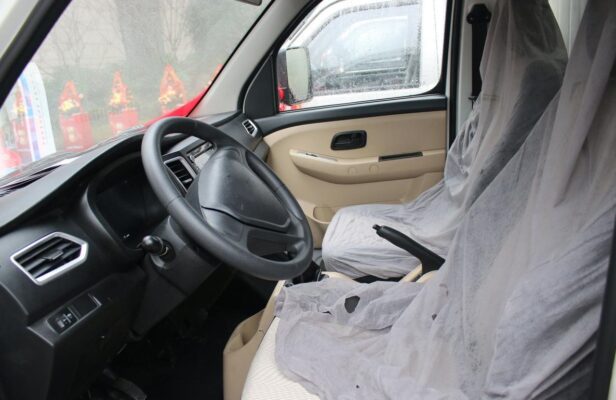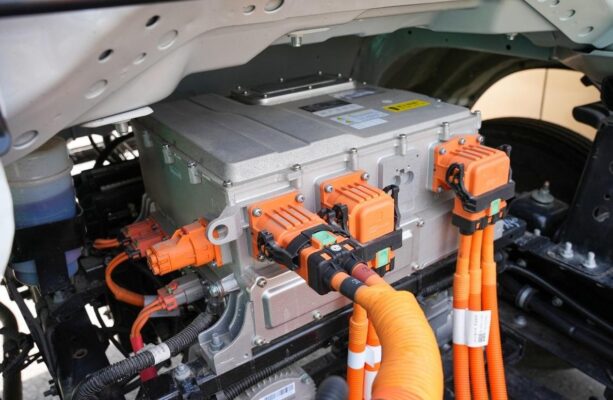Цахилгаан ачааны машины талаархи мэдлэг
The Correct Use of Special-purpose Vehicles
Нийтэлсэн by Цахилгаан ачааны машин
The Use during the Running-in Period
- Prior to the vehicle‘s running-in, it is essential to inspect the following components to guarantee the vehicle‘s safety and prevent damage to major components or assemblies due to a lack of water or oil.
This initial inspection serves as a preventive measure, ensuring that potential issues are identified and addressed before they escalate. Жишээ нь, a shortage of coolant could lead to engine overheating, causing significant damage if not rectified promptly.
- Check the amount of coolant in the engine radiator. Ordinarily, the coolant indicator light on the dashboard should not illuminate. Also, inspect each component and connection management of the cooling system for any leaks.
A leak in the cooling system can result in coolant loss, reducing the engine’s cooling efficiency and potentially causing severe engine damage. Regular checks help detect such leaks early and allow for timely repairs.
- Check the liquid level of lubricating oil in the engine, transmission, steering gear, drive axle, etc. If the level is insufficient, add the appropriate amount promptly. At the same time, inspect each part for any leaks.
Lubricating oil is crucial for the smooth operation and longevity of these components. Insufficient lubrication can lead to increased friction and wear, reducing the performance and lifespan of the vehicle‘s mechanical parts.
- Check whether the braking system functions properly and whether there is any air leakage at the connection points of each pipeline.
A malfunctioning braking system poses a significant safety hazard. Even a minor air leak in the brake lines can compromise the braking efficiency, increasing the stopping distance and potentially causing accidents.
- Check whether the electrical appliances, lights, and instruments operate normally, and examine the liquid level of the battery electrolyte.
Proper functioning of electrical components and adequate battery electrolyte levels are essential for reliable vehicle operation. Faulty electrical appliances or insufficient battery electrolyte can lead to starting problems and disrupt the normal operation of various vehicle systems.

During the running-in period, the following aspects should be noted when driving:
- The vehicle should travel on a flat and well-maintained road surface and should avoid entering roads with poor conditions such as mining areas and forest areas.
This is because rough and uneven roads can subject the vehicle‘s components to excessive stress and shock during the running-in period. Such conditions can lead to premature wear and potential damage, affecting the vehicle‘s performance and longevity.
- Carry out the driving operation correctly, engage the clutch smoothly, shift gears smoothly, avoid stalling, strictly prohibit coasting with the engine off and in neutral gear, and minimize the use of emergency braking.
Smooth clutch engagement and gear shifting help to protect the transmission and clutch systems. Stalling or improper gear changes can cause excessive wear and tear. Coasting with the engine off or in neutral gear can compromise the vehicle‘s control and braking ability, while frequent emergency braking can stress the braking components.
- Always pay attention to the temperatures of the transmission, drive axle, wheels, and brake hubs. If there is abnormal heating, identify the cause promptly and eliminate it.
Abnormal heating in these components often indicates a problem, such as improper lubrication, excessive friction, or a mechanical fault. Timely detection and resolution can prevent more serious damage and ensure the vehicle‘s reliable operation.
Одоо, let’s delve deeper into some additional considerations during the running-in period and beyond:
During the running-in period, it’s also important to vary the vehicle‘s speed and load gradually. Avoid maintaining a constant speed or heavy loads for extended periods. This helps to evenly distribute the wear and ensures that all components adjust and settle properly.
It’s advisable to keep driving distances relatively short initially and gradually increase them as the running-in progresses. This gives the vehicle‘s components sufficient time to adapt and helps detect any potential issues before they become major problems.
After the running-in period, regular maintenance is crucial for the continued optimal performance of the special-purpose vehicle. This includes scheduled oil changes, filter replacements, and inspections of various systems such as the brakes, suspension, and electrical.

Adhering to the manufacturer’s recommended maintenance intervals and using genuine or high-quality replacement parts is essential. This not only ensures the vehicle‘s reliability but also helps maintain its resale value.
When it comes to loading and unloading operations, especially for special-purpose vehicles with specific payload requirements, it’s important to follow the recommended weight limits and loading procedures. Uneven loading or overloading can put excessive stress on the chassis, suspension, and tires, affecting the vehicle‘s handling and safety.
Drivers should also be trained in proper driving techniques and safety protocols specific to the type of special-purpose vehicle they are operating. This includes understanding the vehicle’s unique handling characteristics, blind spots, and any specialized equipment or functions.
Нэмж хэлэхэд, maintaining a detailed maintenance log can be beneficial. It records all maintenance and repair activities, allowing for better tracking of the vehicle‘s history and facilitating the identification of recurring issues or patterns that might indicate underlying problems.
Finally, staying updated with the latest safety and operational guidelines for special-purpose vehicles is essential. This includes any regulatory changes or new technologies that can enhance the vehicle‘s performance and safety.
Дүгнэж хэлэхэд, the correct use of special-purpose vehicleс, especially during the critical running-in period and throughout their lifespan, requires attention to detail, adherence to recommended procedures, and a commitment to regular maintenance and safe driving practices. By doing so, you can maximize the vehicle‘s performance, Нарслаг, and longevity, while ensuring the safety of both the driver and other road users.